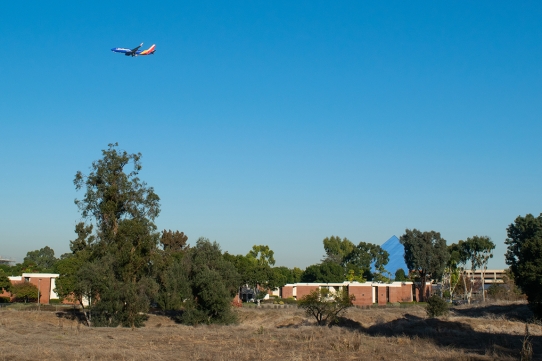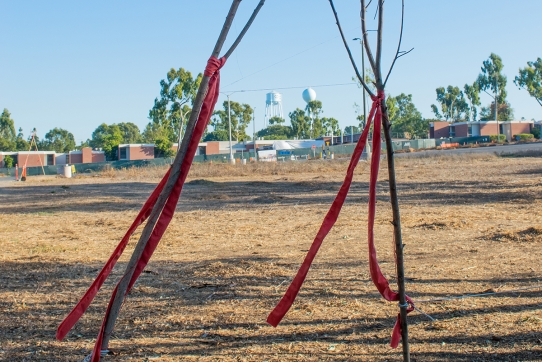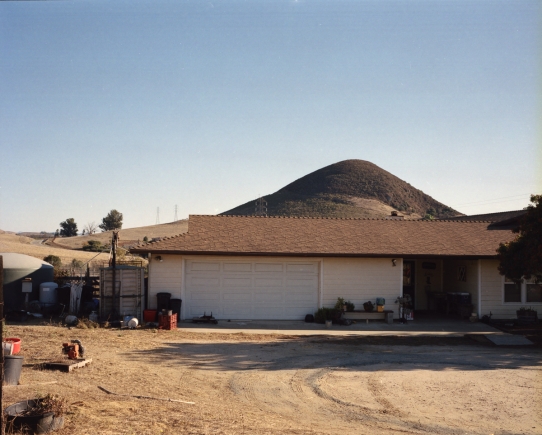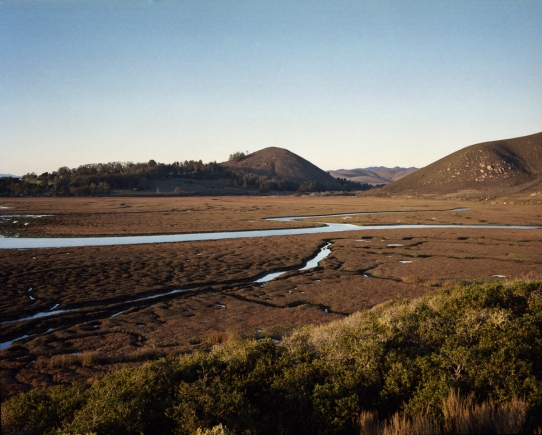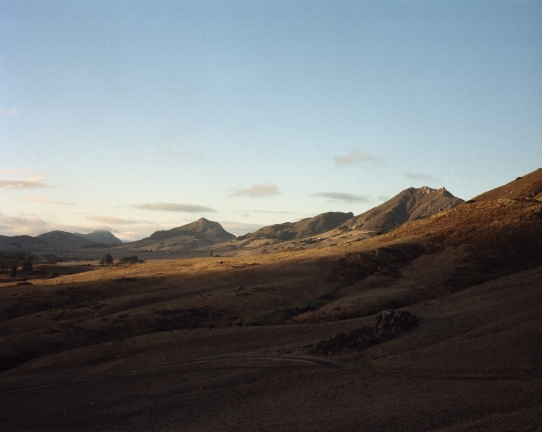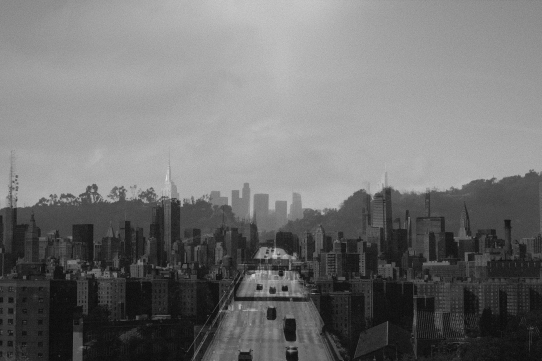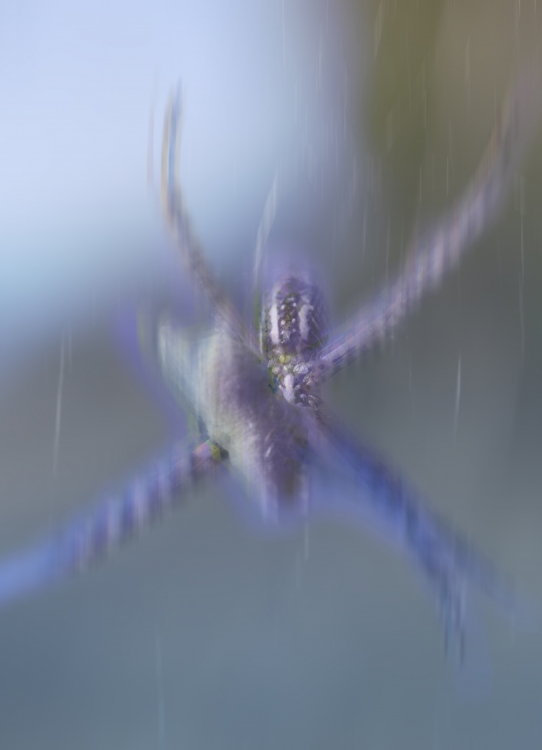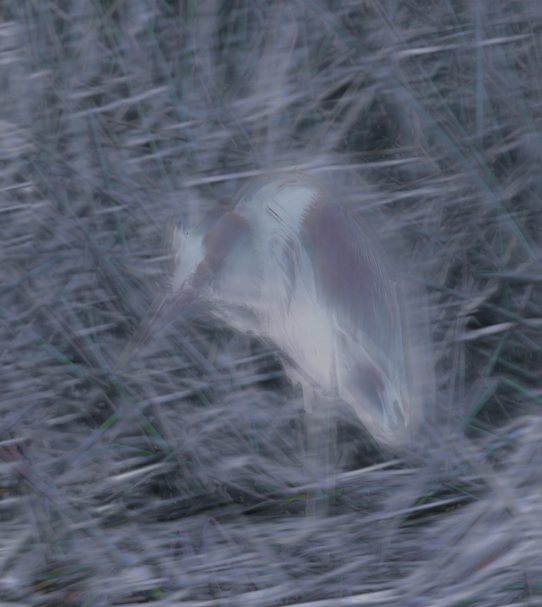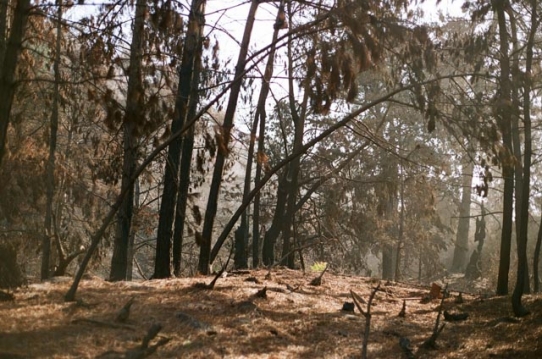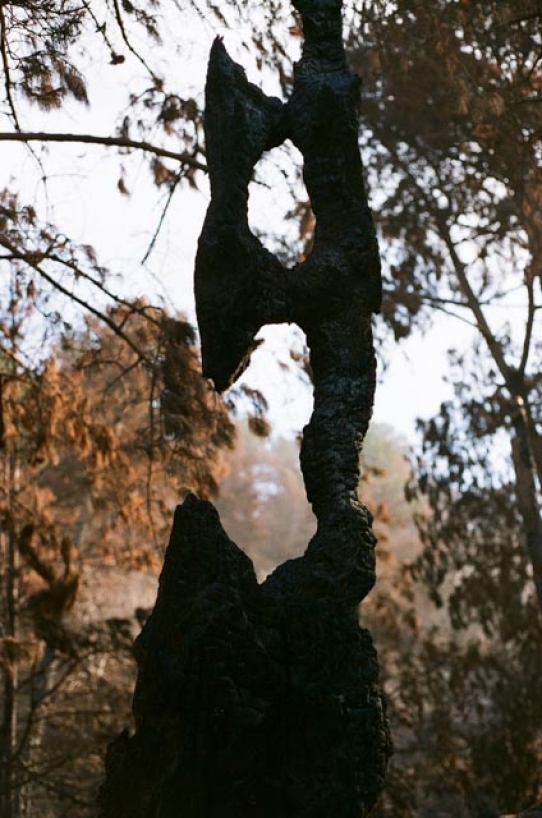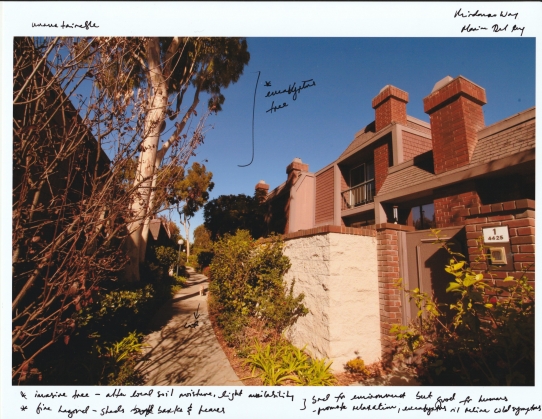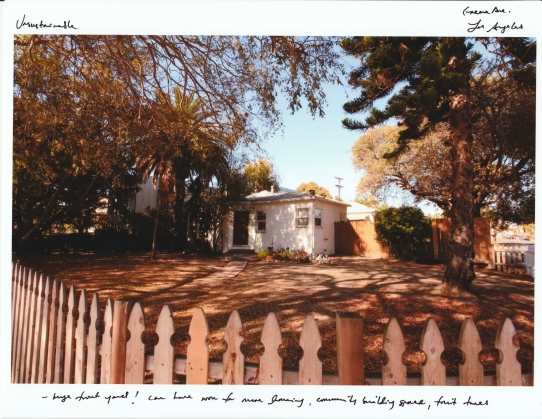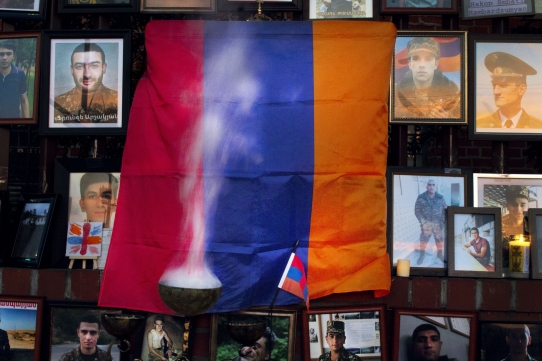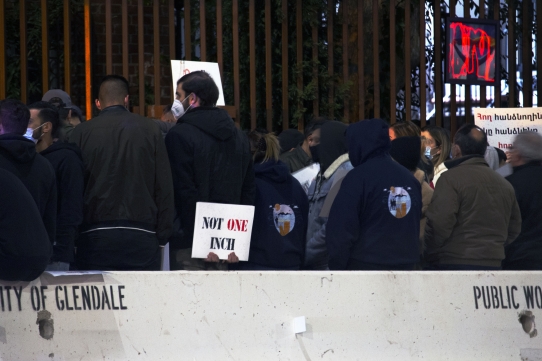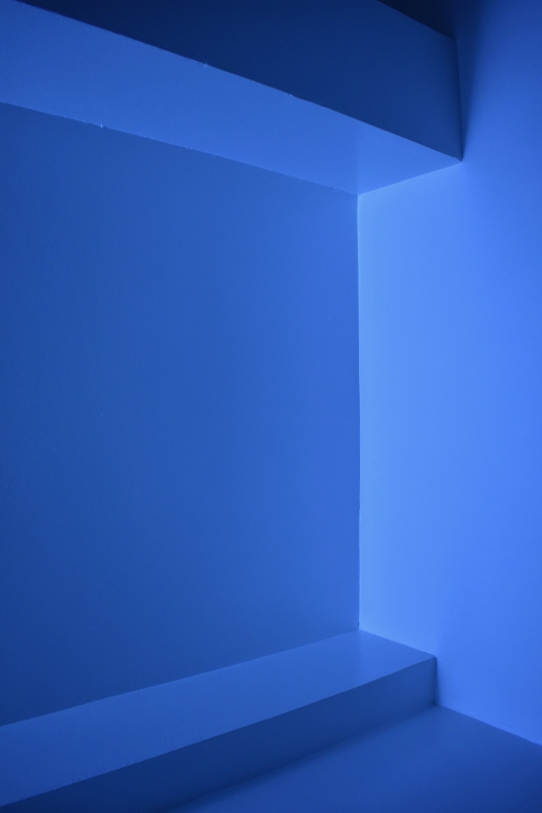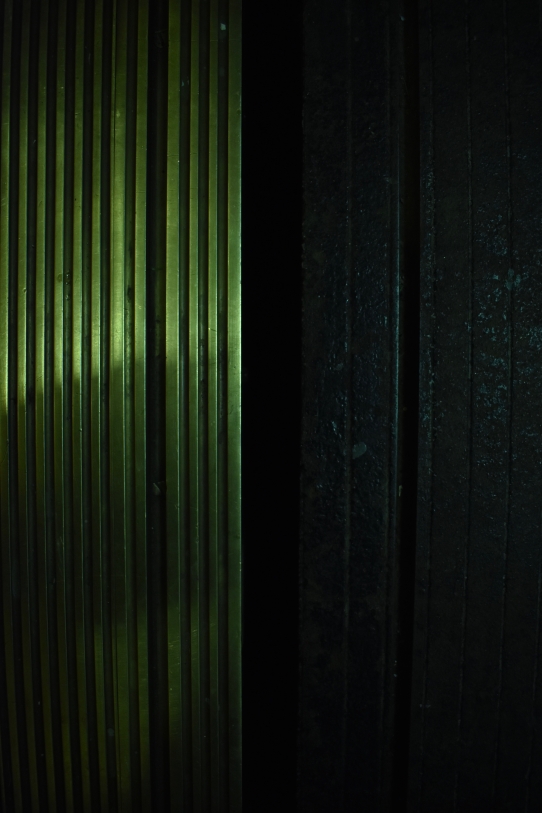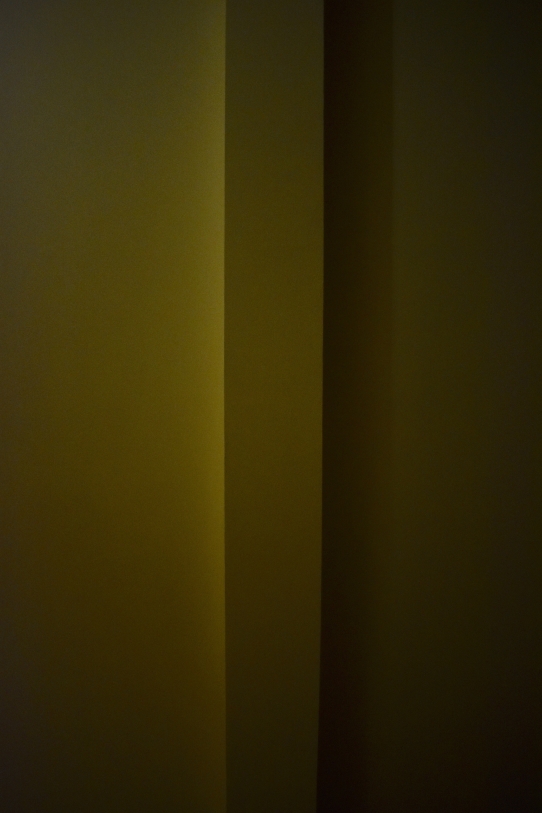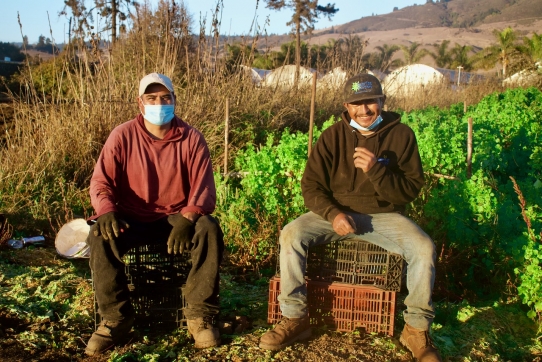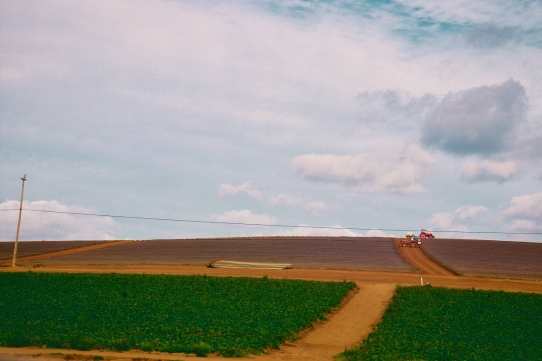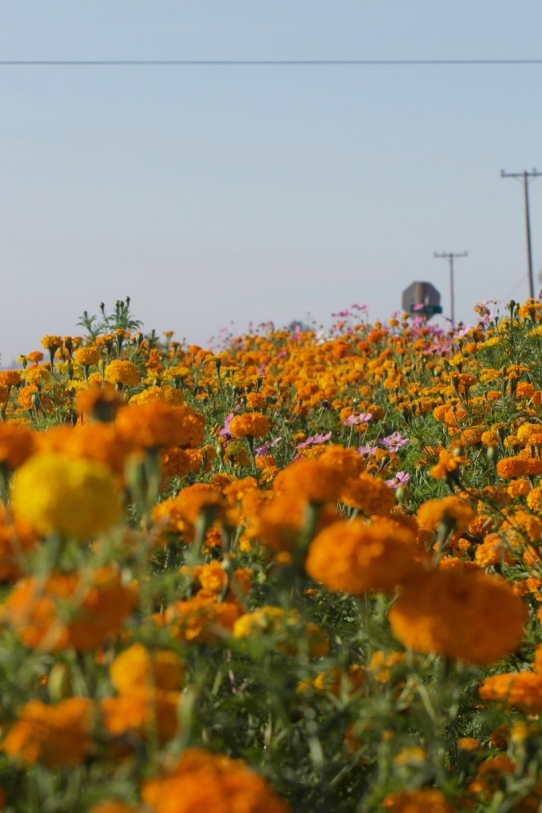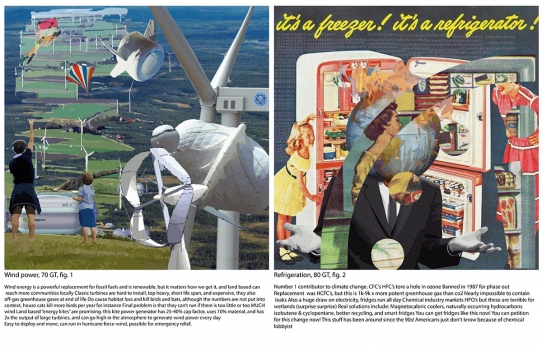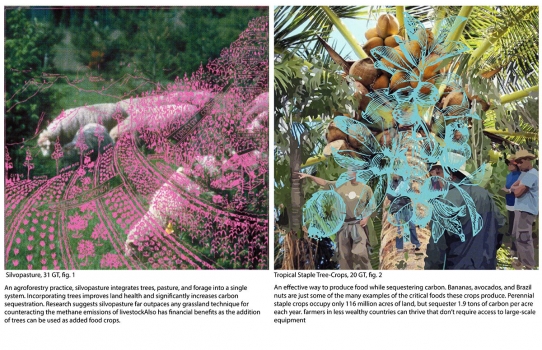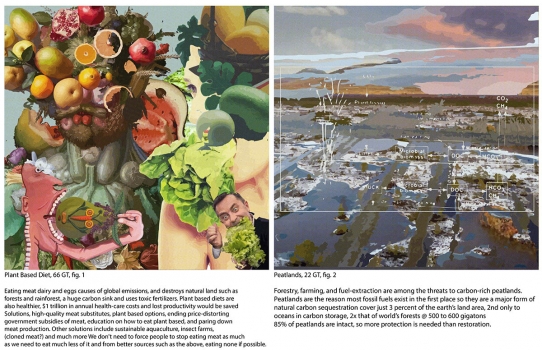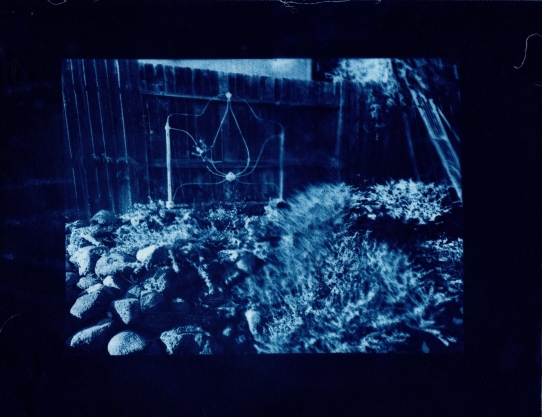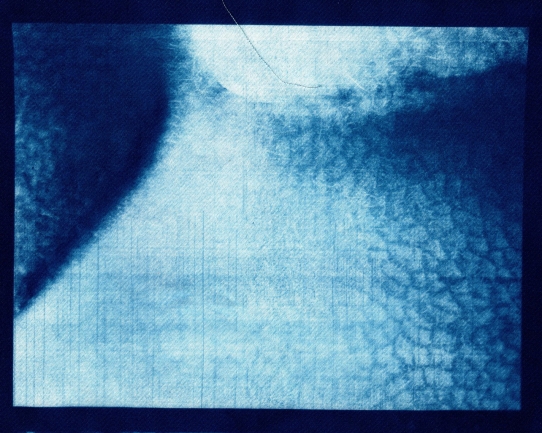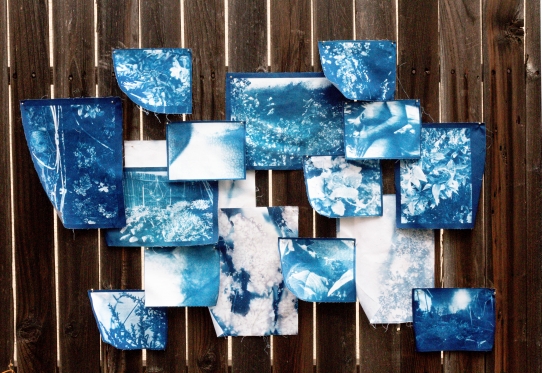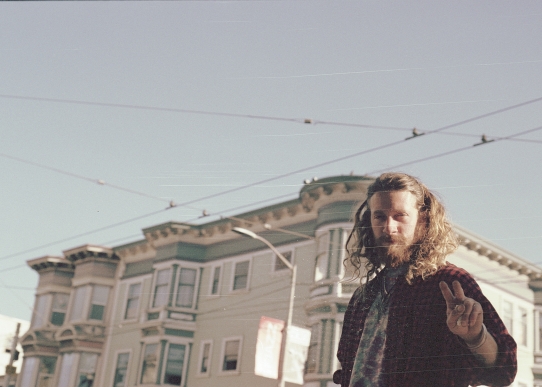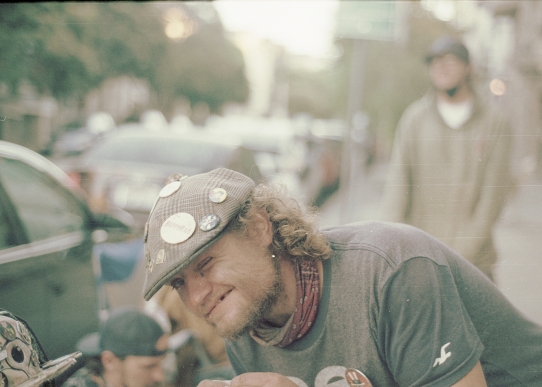Virtual Open Studios Fall 2020: ART 154B - Photography, Place, Environment
Instructor: Karolina Karlic
Charlotte Grenier
Series Title: Sacred Landscapes // Freedom Reigns
Artist Statement: This series focuses on two main sites: Puvungna at CSULB, sacred to the Gabrielino-Tongva Tribe, and Juristac near Gilroy, sacred to the Amah Mutsun Tribal Band. These two sites have deep histories and are both in danger of being irreversibly destroyed by essentially pointless development. See full series and Artist Statement at the following link: https://tinyurl.com/y2u5us7z
Charlotte Grenier
“Freedom Reigns”
Digital Photo
Initially the name of this ranch may seem clever, until you realize that it uses the wrong “reign.” If the owner was trying to reference their horses, they should have used “rein.” Instead, this oxymoron implies a representation of many American’s ironic obsession with both freedom and private property. // This ranch happens to be situated on stolen land of the Amah Mutsun Tribal Band. Just across highway 101 sits Juristac, their most sacred ceremonial grounds. A private debt collection company is in the process of trying to turn Juristac into a sand pit mine.
Charlotte Grenier
“Island of Ceremony”
Digital Photo
This photo features the last remaining undeveloped portion of Puvungna, a sacred burial ground and ceremonial site for the Tongva-Gabrielino Tribe. Puvungna is considered the birthplace of their people and their god, and CSULB is built right on top of it. These 22 acres are all that remain of the 500 acre village site, and the Tongva are still fighting to keep it safe from development to this day.
Charlotte Grenier
“Ancestors Tower Higher”
Digital Photo
Here, two massive water towers and a construction site are framed by an archway-entry to one of Puvungna’s ceremonial circles. Indigenous Peoples from all over Southern California gather here for ceremonies and powwows several times a year. While this patch is small, it holds so much power.
Charlotte Grenier
“Sacred against concrete”
Digital Photo
A little piece of natural history amongst a sea of concrete property.
Dylan Brunick
Series Title: A Sister's View
Artist Statement: A rare geological oddity of nine once active volcanoes stretch in a linear 40 mile range shaping the landscape and lifestyle of San Luis Obispo. In this series A Sisters View, I used photographs to capture the visual elements of these peaks within their landscapes and how people have adapted around them. These peaks tell a story about the relationship between nature and humanity and how they should preserve one another. As the human population has expanded these mountains have new meanings that were once non existent. The history of life development in this area revolves around this linear formation of nine solidified magma filled chambers. They are a part of a bigger story that has shaped a landscape and now created a community. Preservation of these peaks needs to be protected as their historic and geological values are an important part of the Earth's history.
Dylan Brunick
“Civilization below Bishop Peak”
6x7 medium format film scan
This image represents adaptation of life to its surrounding environment as a community below the tallest of the nine sisters. Rock from this peak was used to create structures below and shows the ties between nature and humanity.
Dylan Brunick
“The First Peak”
6x7 medium format film scan
This image is of Islay Hill which is the first peak in the stretch of mountains. This simple mound represents the lifestyle that it has created around it.
Dylan Brunick
“Black Hill through the estuary”
6x7 medium format film scan
Black hills pine tree covered form was brought by man showing how without a structure we can still change the meaning of a once untouched area.
Dylan Brunick
“Linear Alignment”
6x7 medium format film scan
This image showing the backside of Bishop Peak, Chumash Peak, Cerro Romauldo and Hollister Peak is a close representation of what these peaks looked like before urbanization and represents the story of them before humanity.
Eliza Catarongan
“NYC x LA”
A double exposure photo of New York and Los Angeles’ city scapes.
“The A Train”
The A train in Manhattan with masked travelers.
“Breaking News”
A masked protester in downtown LA, whose poster announces Trump’s loss in the 2020 election.
“Together”
A photo of the crowd in one of the LA protests. Everyone’s identity is hidden with a mask, with most people facing away from the camera.
Grace Brieger
Kerstin van den Oever
Series title: Beyond the Redwoods
Artist Statement: This series is about the recent wildfires caused by the CZU Lightning in August. My hopes of shooting these locations with analog was to share the impact of what the community had to deal with, especially during a pandemic. This project was then redirected to how California has been using incarcerated individuals since the 1940’s. While this is frustrating, it is also filled with positive and impactful stories of how firefighting has changed lives. I hope to raise awareness about the on-going issue of climate change and to also share with others who haven’t experienced a wildfire, the amount of damage it leaves upon a community.
How Far Will You Go(Grow)
Fuji film, Canon AE-1
This photo is just a small area of the large fire between waddell creek and big basin state park, looking almost like an apocalypse just occurred.
Scorched Beauty
Fuji film, Canon AE-1
This photo shows a close up shot of a tree burnt down to almost nothing, pictured in the lower right of the first photo.
Fuji film, Canon AE-1
This photograph is one of a tryptic set, in Bonny Doon CA. It is only a couple of months post fire, and you can tell how much regrowth is taking place.
Fuji film, Canon AE-1
This photo is a close up of a fern that stood out to me about 10ft away. The sun was beaming through it perfectly, and right after I captured this photo the sun disappeared as the heavy layer of fog rolled through.
Louise Balderas
Artist statement: I began with wanting to expose how toxic it is to own a green grass front lawn. I thought most of the neighborhoods had front green lawns and so I wanted to expose how bad that is to our entire class and how there are so many other options. Little did I know, the Santa Cruz community are already one step ahead. I surveyed my neighborhood by walking down the street where I live and drove around neighborhoods near campus. I noticed that people didn’t have green front yards. They were either empty dead bushes, succulent theme yards or they had a garden in front. I researched what was going on and it turned out: the city was giving rebates to switch to a more sustainable living practice. It was mostly the same thing that happened to my hometown in Los Angeles. Except fewer houses exercised sustainable yards and a lot of the neighborhoods are townhouses with regular maintenance which probably costs a lot. With researching the rebates,which types of bush, shrubs, and trees were trending in the photos I’ve taken are invasive to local soil and whether the species is native to the land, as well as a couple of activists in local communities trying to make our neighborhoods more sustainable, I’ve annotated these photos pointing how sustainable they are.
Mindanao Way Marina Del Rey, 90292
Printed, annotated with black marker and scanned image
Mindanao Way Marina Del Rey, 90292
Printed, annotated with black marker and scanned image
Halterman Ave. Santa Cruz, 95062
Printed, annotated with black marker and scanned image
Halterman Ave. Santa Cruz, 95062
Printed, annotated with black marker and scanned image
Nicole Tarvirdian
Series Title: Armenia vs Azerbaijan/Turkey War
Nicole Tarvirdian
“Brave Souls”
Digital Photo
A drive only 5 minutes away from my home, on one of the main streets, is a small memorial of the soldiers who have volunteered to fight for Artsakh. It’s located in front of the Armenian Consulate General’s building. Usually armenians burn a type of Incense for death, called “Khunk”, and in this image the khunk evaporates into the sky, joining the men and women whose pictures are placed for respect, alongside with the Armenian Flag.
Nicole Tarvirdian
“Armenian Culture”
Digital Photo
With this project it brought me to learn more about my moms life in Iran when she was younger, learning more about the armenian culture back then and how turkish people never backed down from diminishing our beautiful culture.
Nicole Tarvirdian
“Stolen Land ”
Digital Photo
November 9th, 2020 was the day that the Prime Minister of Armenia, Nikol Pashinyan, signed the land away to Azerbaijan. Our soldiers fought hard and over 2,000 were killed, many families homes and lives were taken away from them. We had no help but Azerbaijan had the upper hand from Turkey, since Turkey committed the Armenian Genocide in 1915. Armenians that day were confused and distraught about what to believe, so some protested in front of the Armenian Consulate Building in my city.
Nicole Tarvirdian
“We Will Win”
Digital Photo
This poster was placed on the gate of the consulate building. It’s the Armenian Flag, with the Armenian word “Haxteluenq”, which means “We Will Win”. It’s a saying to bring unity and strength among us, knowing that we survived a genocide, and that we can survive another one.
Racha Elsbach
“Denial Unravelling”
A tile corner in a washing room.
“Staring without choice”
A sideways ceiling in a hallway.
“Temporary bliss”
An elevator shaft.
“The threshold between existence”
A pillar on the ceiling
Reya Borbridge
Artist Statement:
Farms, Farmers, and the Field is a photography project I created to centralize the people who bring food, flowers, and other goods from the field to the markets and into our homes. I have been shooting photographs for several months now for this series and have a strong selection of 15 images to convey an entire body of work. They will be exhibited digitally on a website, where I will have portraits and field photos featured. Along with this, I have interviews with the farmers themselves that make up a biography about them. I asked these farmers questions to allow my audience to feel more connected to their portraits. Some of these questions include, what they do for fun outside of work, what their favorite foods to eat are, and if they have a favorite genre/artist of music to listen to. I felt that having these images along with a short biography allows a more personable relationship between the farm and the farmers on the field.
I started this project journey by driving up highway 1 in search of farms to explore, photograph, and research. I was discouraged at first, disappointed that I wasn’t getting the images and meaningful conversations, I expected to get. The following weekend I realized I needed to assert myself in this project more, and so I began to call different farms in Watsonville. All but 1 of the 10 I wrote down answered my call. I went to Gzvich farm 2-3 times to take field photographs and portraits of the woman in the kitchen baking pies from the berries on the farm. From here I began to become more comfortable with the topic and started questioning the ways I wanted to go about it in a respectful and honoring way. I then made a phone call to the farm across the street from Gzvich farm. This farm was called Sunrise Nursery. They are known for the flowers they grow and sell in the farmer's markets. I still am collaborating with this farm today to create this project and form a developed association with the farmers themselves and owners. I have learned so much, and have taken long drives with the owners to learn about the culture and history of Watsonville. This experience itself has been an amazing educational journey, as well as an incredible resource for my photographs to convey. This type of in-person, archival research has been wonderful for me to learn outside of articles and online resources, something that is hard to get.
I feel very connected to this project because it reflects farms, labor, climate change, and shows that farmers are just regular people that do so much for such little pay. I have done several internships on the farm at UCSC and still today with my job get to work with the farm by using the fresh produce in my cooking classes. Now that covid has come into effect my job has shifted. It’s still centralized around food sovereignty and food justice, but now we have created meal kits for students and more offerings at the free slug support pantry on campus. I help prepare the cooked food components for these kits to distribute to students on campus. I also work with creating recipes, and cooking videos to share on social media such as Youtube, Instagram, and TikTok. These videos and recipes highlight seasonal food and what is being distributed at the pantries for that week. It’s important to showcase how to cook healthy meals on a small budget. Because of this close association to the farm and sustainability, I care a lot about my project's subject matter and the way I go about photographing it.
My research for this project is constantly evolving. I have fortunately made a very strong relationship with the owners of the farm and I am extremely grateful for it. They have been so helpful when it comes to my research and education on this topic. The first time I visited the farm, the owner's wife Jennifer, and I went on a drive. It felt as if I was receiving a one on one personal tour on the history of Watsonville. Jennifer and I did this 3 times in a month, where she kept introducing me to new historical landmarks, centers, and the most established farms that distribute to a variety of vendors. While she gave me info tours I would write down as much information as I could and then later that week due to more extensive research on my own time.
Ethics and appropriate working methods in my project are something I take very seriously. When I got started on this project I understood that there were a lot of things I needed to do to go about the project appropriately, and in a way that is considerate when it comes to photographing farmers and interviewing them. I have made it a priority to make a connection with these individuals and the owners of the Sunrise Nursery Farm. For the interviews, I printed out previous photographs I took of the farmers, made them homemade vegan banana muffins, and made the effort to make this a collaborative project. I am planning to have this be a year-long series where I have the project live on a website. On the website, I am including a gallery portfolio section of the field, and farmers, portraits with biographies, and a blog post section. I will continuously create writings that are centralized around my project, and research that I have done for the blog. I am hoping my audience will be very broad, and allowing people from all walks of life to engage and feel enlightened from it.
In the critique for my final project, I got a lot of feedback. Much of it was positive, where students responded very well to the way I executed the subject matter. Some more critical feedback I received was the way I talk about the difference between “farmer” and “farm-worker”. This differentiation is extremely important since the choice of wording can really impact the way I reflect on the work I am doing. I felt that this was something I knew I was struggling with already since Jennifer actually reviewed my abstract and mentioned this. She actually had a good conversation with me on what the difference is and how to talk about it correctly and distinctly understand the difference between the two. She sent me a piece that she wrote on this topic and distinguished “farmers” as the land and business owners and the farmworkers as the individuals doing the hard physical work. However, the issue is people cannot see that farmworkers can also be the sellers at the markets not just the ones on the farm. Today only 1% of America calls themselves farmers, yet protections for these livelihoods are some of the strongest in the nation. Farmworkers, on the other hand, receive little protection from the law. Although in this statement I stated these “Farmworkers'' as “Farmers” I felt that It was more appropriate, especially since this farm that I am working with is a small business whose goal is to treat their employees fairly, pay them respectfully and do the best they can in supporting farmworker justice. Overall the concept of my project is to shine a light on these individuals, the environment of the farm and field itself, and provide my audience with an artist perspective on agriculture and the individuals themselves who work in the fields.
Reya Borbridge
“Daniel and Felipe”
Digital Photography
This is 1 of many images in a photographic series called “Farmers, Farms, and the Field”, where I am focusing on a farm in Watsonville that focus on the farmers themselves and capture both the field and portraits.
Reya Borbridge
“The Field”
This is 1 of many images in a photographic series called “Farmers, Farms, and the Field”, where I am focusing on a farm in Watsonville that focus on the farmers themselves and capture both the field and portraits
Digital Photography
Reya Borbridge
“Cecilio”
Digital Photography
This is 1 of many images in a photographic series called “Farmers, Farms, and the Field”, where I am focusing on a farm in Watsonville that focus on the farmers themselves and capture both the field and portraits
Reya Borbridge
“Marigolds”
Digital Photography
This is 1 of many images in a photographic series called “Farmers, Farms, and the Field”, where I am focusing on a farm in Watsonville that focus on the farmers themselves and capture both the field and portraits
ALSO HERES A LINK TO MY WEBSITE! https://reyasimone.wixsite.com/website
Sam Garbus
Series title: A Few Solutions
Artist Statement: This series of collages is meant to draw attention to the most impactful ways we can achieve drawdown with current technology. Drawdown is the point at which a reversal of global warming is achieved and the ppm of greenhouse gasses are reduced. Each solution is accompanied by research on the topic and the amount in gigatons of Co2 equivalent that would be removed from the atmosphere if the solution was implemented. Too often we see this issue as unsolvable, or are unsure of the real solutions. Each piece is meant to draw the viewer in and call their attention to a particular issue and the explanation below.
Sam Garbus
“Wind power, refrigeration”
Digital photo collage
This diptych reveals the two largest solutions to climate change; changing our methods of refrigeration and refrigeration related recycling, and harnessing wind energy to replace fossil fuels. Both contain hidden images of the doomsday clock at 100 seconds to midnight highlighting the urgency of these solutions.
Sam Garbus
“Silvopasture, Tropical staple tree-crops”
Digital photo collage
These highly effective and efficient forms of farming both have the result of cheaply sequestering carbon, as well as increasing agricultural yields. Both images use scientific drawings of the subject as well as photos of the solutions in action.
Sam Garbus
“Plant based diet, Peatlands”
Digital photo collage
A plant based diet and peat lands are perhaps the two easiest solutions to climate change there are that the average person can help with right away! Forgoing meat, eggs, and dairy as often as possible is the larger contributor, while most peatlands are only in need of advocacy for their continued protection.
Sam Garbus
“Aforestation, Regenerative agriculture”
Digital photo collage
These two powerful solutions offer us ways to reverse a myriad of ecological damage and actually improve the land that we use and live on over time. This gives us a more stable and healthy environment, but also creates natural beauty.
Shelby Johnson
Artist statement: This is a garden for healing is a photographic project created to reflect on the processes of trauma, healing, and growth. As the result of a breast reduction surgery in August 2020, I found myself faced with the overwhelming task of accepting a newly altered body and the challenge of dealing with debilitating chronic nerve pain as a side effect of the operation. I found myself grasping for any way to feel present in my body as well as a strong urge to reconnect with nature and to help care for my immediate environment. I came to this project of growing and caring for a bee-friendly garden in my backyard to spend time outside and hopefully improve the health of the fruit and vegetable beds in the process. From October to December 2020, I documented this period of growth by making cyanotype prints of my body and the garden. The images were installed on my garden fence in December 2020 in order to come back to the space in which they were originally created.
“this is a garden for healing”
Cyanotype print on cotton sateen fabric
This image documents a windy autumn day in the bee garden. The prints in this project were created in a process of photographing the garden, creating transparencies on a laser printer, and making contact prints on fabric sheets treated with cyanotype chemistry.
“scarred and sage textures”
Cyanotype print on cotton sateen fabric
This cyanotype print was created by layering an image of my chest and scars with a close up photograph of a sage leaf from a plant growing in the garden.
fence installation detail
Cyanotype prints installed on garden fence
Close up image of cyanotypes nailed onto my garden fence.
fence installation documentation
Cyanotype prints installed on garden fence
Documentation of the installation of the cyanotypes nailed onto my garden fence in a collage.
Sofia Shteyngolts
The series “Love on Haight” is an exploration of the Haight-Ashbury “street” community. It centers around the interactions, individuals, emotions, and the sense of family and unconditional love and acceptance that these folks possess. Unfortunately, some local housed residents look down upon the houseless folks who spend their time on the corners of Haight-Ashbury, the location in which these images were taken. The following project is meant to invoke acceptance within those people by capturing the love of Haight while exploring community as a landscape.
32 mm film digital scan
“Haight-Ashbury, San Francisco”
Grom poses for me on the corner of Haight-Ashbury.
32 mm film digital scan
“Loki”
32 mm film digital scan
“I don’t say goodbye; I say happy birthday”
32 mm film digital scan
“Gleeful”


